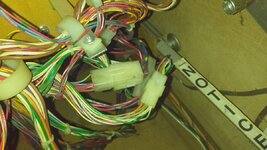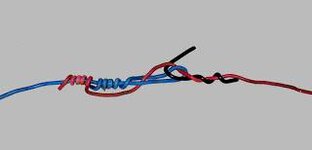Just a little advise, my JM keeps blowing the fuse that controls the hand magnet, ball popper and autoplunger. It looks like my JM hasn't had the service bulletin fix done to it looking at this picture.

I've read the service bulletin and I just want to make sure I've got this right. Is the idea to cut the red/brown wires on the left of that plug, leaving one wire longer so I can solder a jumper on to and route it into the back box then twist together and dress the remaining ends?
Where would I find 8ft of 18ga jumper wire?

I've read the service bulletin and I just want to make sure I've got this right. Is the idea to cut the red/brown wires on the left of that plug, leaving one wire longer so I can solder a jumper on to and route it into the back box then twist together and dress the remaining ends?
Where would I find 8ft of 18ga jumper wire?


